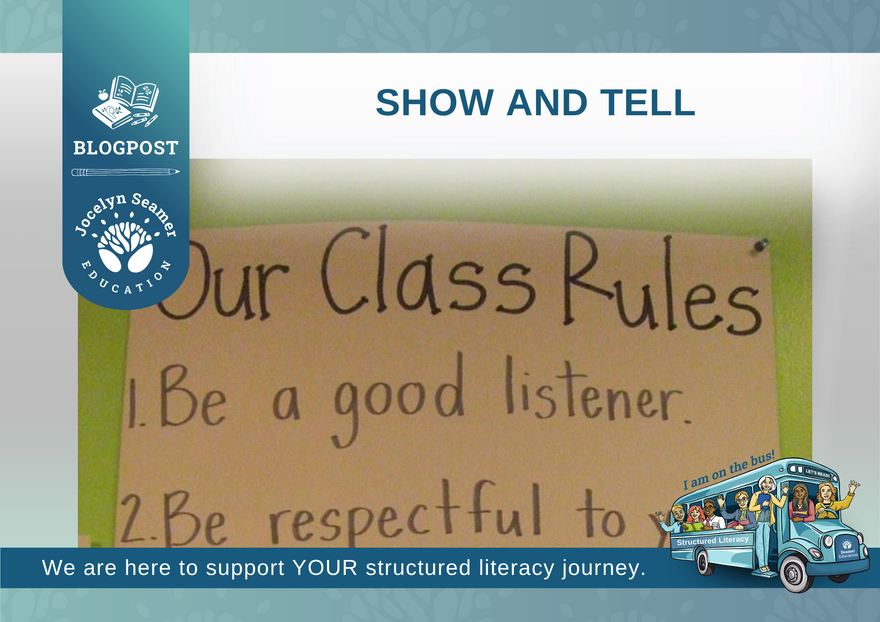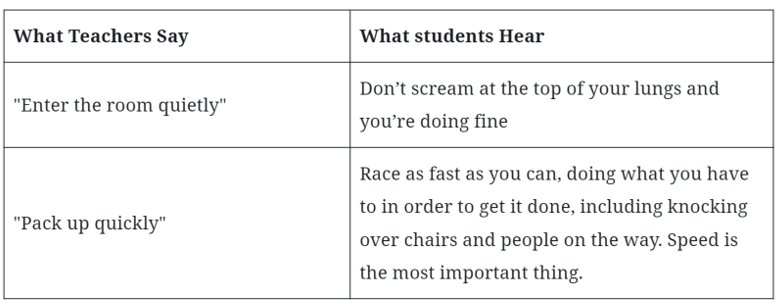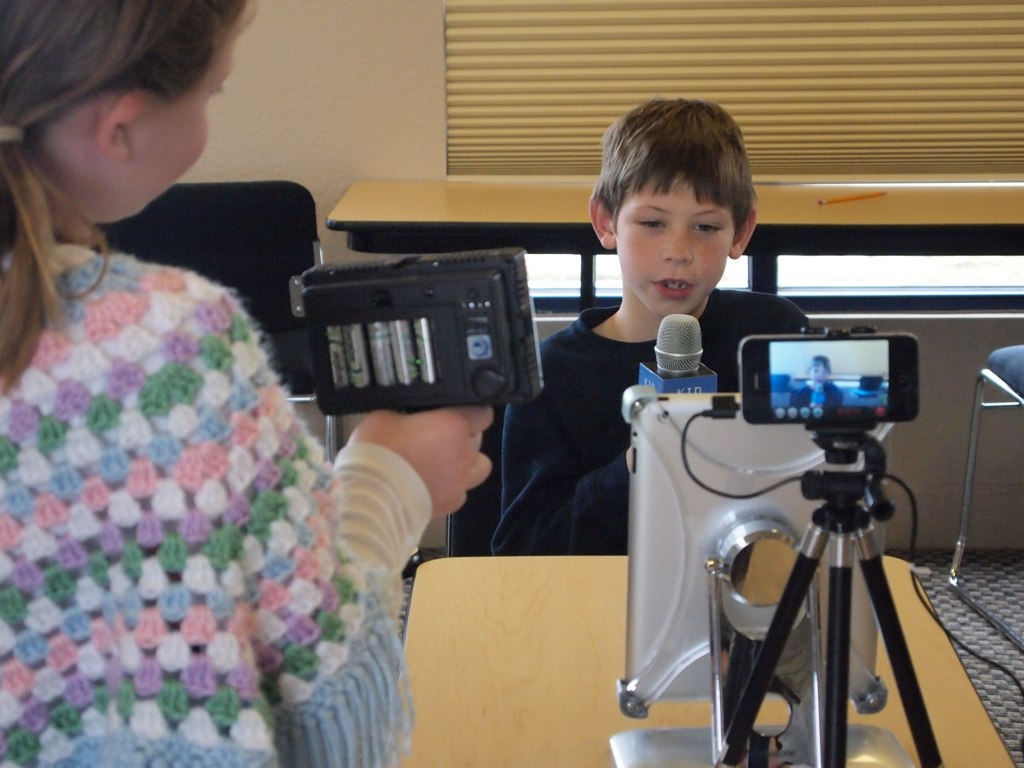Show AND Tell

The start of a new school year (or term, or week, or day) brings with it a desire to establish routines and expectations in our classrooms. It is usual to spend time with students talking about rules and outlining what will be expected of all members of the class. These will be reinforced each day as you give instructions to students. You might ask them to enter the classroom quietly or move quickly to pack up.
This is all great if students understand what it is you want them to do but the wheels can fall off when there is a difference between what we think we are communicating and what students actually hear or understand.

What You Say Versus What Students Hear

After we have given our somewhat ambiguous instructions and students have interpreted them in their own way, it is understandable that we can get a little cranky. The poor student with the receptive language delay or difficulty with self regulation then looks at us feeling confused about why they are now in trouble and you are left wondering if you are teaching a group of children who have their ears painted on.
Here’s one of my favourites.
Teacher: work quietly please (really means silently)
Students sit with books in front of them, whispering to each other about the work (yes, it does sometimes happen!)
Teacher: I said quietly!
Students look puzzled because they are, after all, not being noisy.
This would have been a totally different situation if the teacher had said,
“Work silently please. Remember that means that everybody is working on their own in their own space with absolutely no speaking”

We often play a game of ‘Guess what’s in my head” with kids. Just because we have said ‘enter the classroom in an orderly fashion’ doesn’t mean that kids know what that means. You can alleviate issues with student behaviour by explicitly showing them what you mean. Create a video with students as the actors to show exactly what you want them to do. Providing a visual like this will mean that students fully comprehend what you mean. They can’t do what you want if they don’t know what good performance looks like.
For small moments in the classroom or to reinforce previously explored expectations ask a student to demonstrate. It can be a good idea to have a student who struggles in the behaviour be the model. This creates a win-win situation. They get a highly supported lesson in the target behaviour and the other students see exactly what it is you want. Your student is much more likely to follow through with the behaviour if you have spent the time with them to be very clear about your expectations. Of course, you won’t embarrass them by saying, “Jim, you aren’t very good at sitting up on your chair. Come and show everyone the right thing to do”. Instead you might say “I need a helper to be an amazing model for sitting up on your chair. Jim, can you help me please?”
Making sure that we are being very explicit in what we want students to do supports our whole class but particularly our learners on the autism spectrum or those with receptive language difficulties.
Tips to clearly communicate your behaviour expectations

- Say what you mean and mean what you say. If you mean silently, say silently.

2. Provide real-life visuals to back up your message
3. Avoid funny memes when giving instructions about behaviour. As an adult you know what they mean, children may not and your message could be completely lost.

4. Avoid sarcasm. This can result in mixed messages

5. Involve your students in creating videos and posters to illustrate your point. This may take some time, but time invested at the start of the year will pay off as the year goes on.

6. Use examples and non-examples to really make the message clear
Remember that communication is about much more than what we tell children. It is important to both show AND tell to ensure that our message come across clearly.


 Jocelyn Seamer Education
Jocelyn Seamer Education

2 comments
Leave a comment